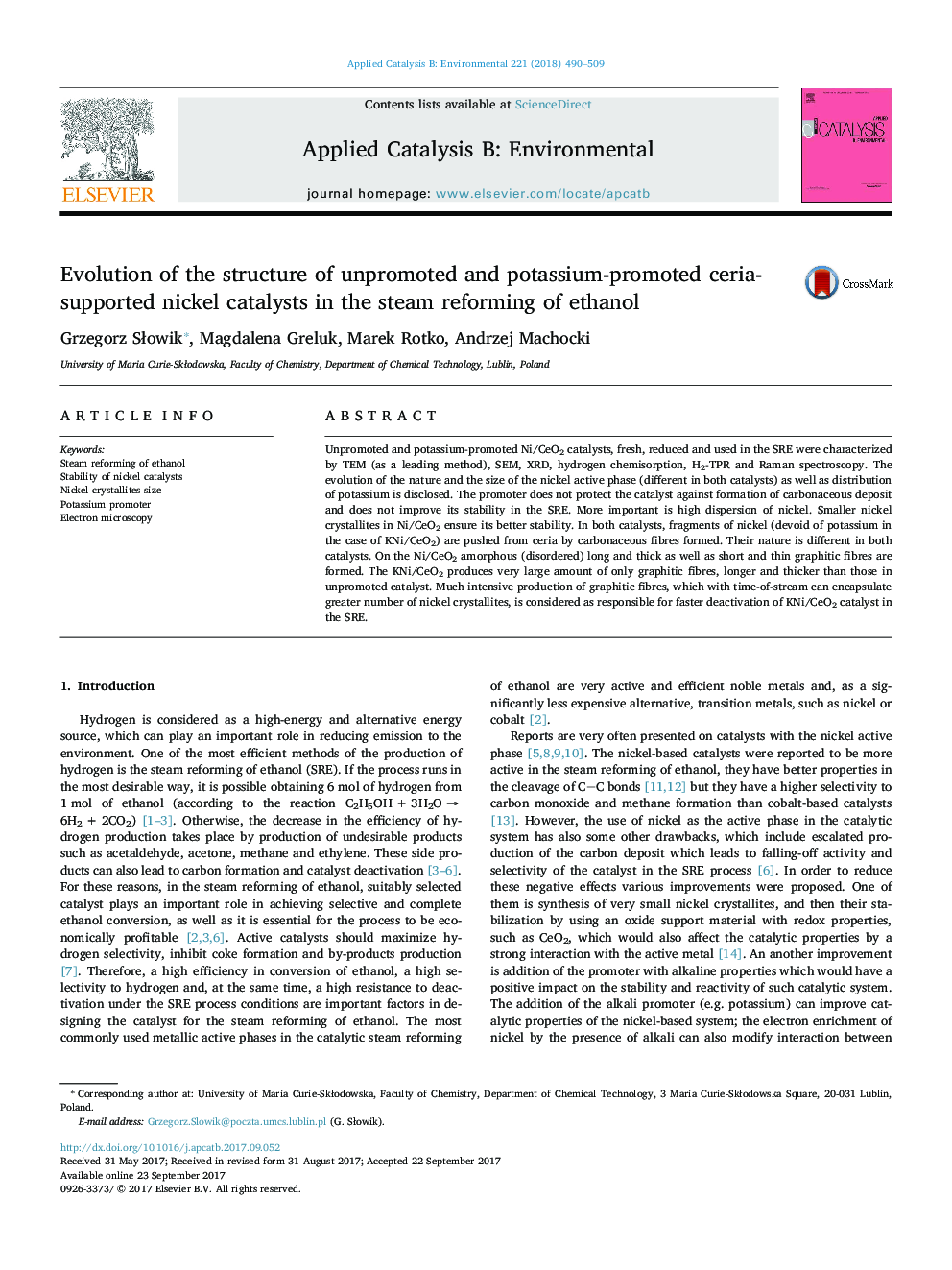| Article ID | Journal | Published Year | Pages | File Type |
|---|---|---|---|---|
| 6453486 | Applied Catalysis B: Environmental | 2018 | 20 Pages |
â¢Potassium promoter in the Ni/CeO2 catalyst increases the size of Ni0 crystallites.â¢Dispersion of nickel has significant impact on catalysts behaviour in the SRE.â¢Larger Ni crystallites favour production of carbon deposit and catalyst deactivation.â¢Different carbonaceous fibres on Ni/CeO2 and Ni/CeO2 catalysts are formed in the SRE.â¢The temperature of H2 chemisorption for determination of Ni particles is 110-140 °C.
Unpromoted and potassium-promoted Ni/CeO2 catalysts, fresh, reduced and used in the SRE were characterized by TEM (as a leading method), SEM, XRD, hydrogen chemisorption, H2-TPR and Raman spectroscopy. The evolution of the nature and the size of the nickel active phase (different in both catalysts) as well as distribution of potassium is disclosed. The promoter does not protect the catalyst against formation of carbonaceous deposit and does not improve its stability in the SRE. More important is high dispersion of nickel. Smaller nickel crystallites in Ni/CeO2 ensure its better stability. In both catalysts, fragments of nickel (devoid of potassium in the case of KNi/CeO2) are pushed from ceria by carbonaceous fibres formed. Their nature is different in both catalysts. On the Ni/CeO2 amorphous (disordered) long and thick as well as short and thin graphitic fibres are formed. The KNi/CeO2 produces very large amount of only graphitic fibres, longer and thicker than those in unpromoted catalyst. Much intensive production of graphitic fibres, which with time-of-stream can encapsulate greater number of nickel crystallites, is considered as responsible for faster deactivation of KNi/CeO2 catalyst in the SRE.
Graphical abstractDownload high-res image (312KB)Download full-size image
